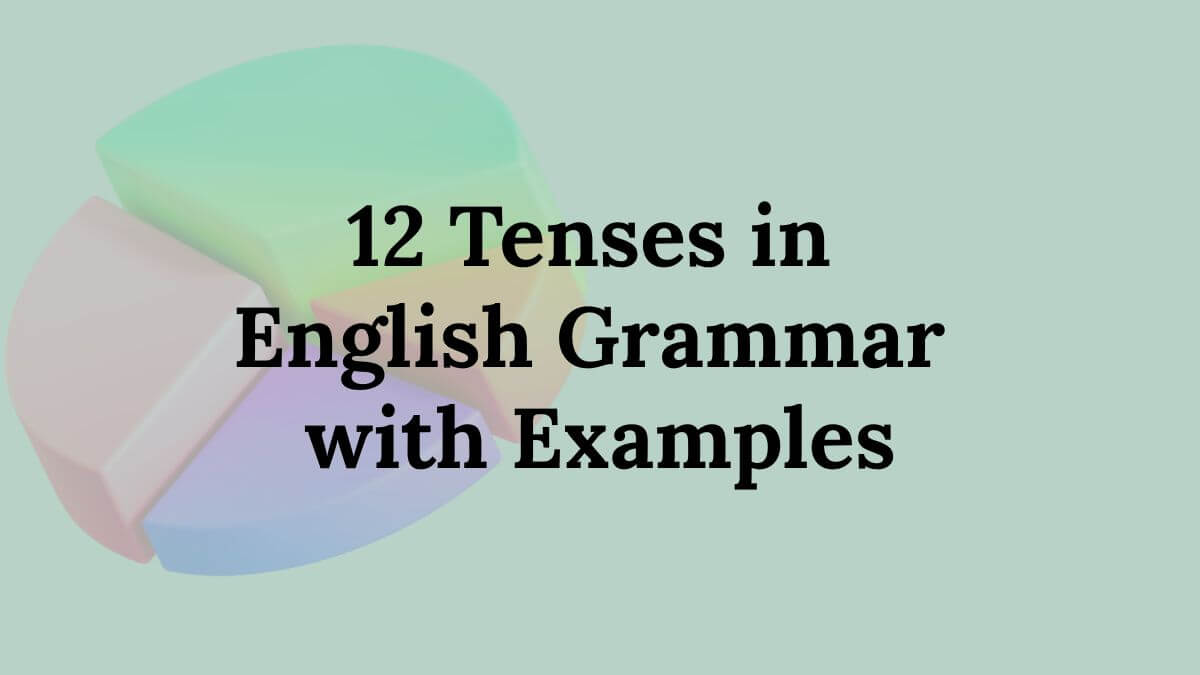Learn all about the 12 tenses in English grammar with easy examples and clear explanations. Master tense usage to improve your English and communication skills. English grammar is essential for clear and effective communication. Whether you’re speaking, writing, or creating content for your WordPress web design service, knowing how to use tenses correctly can help you express ideas more accurately and professionally. The English language is structured around time, and English reflect when an action takes place—past, present, or future. Each of the English grammar serves a unique purpose and follows a specific structure. From simple actions to ongoing or completed events, tenses guide how we form and understand sentences. For learners, content creators, and educators, mastering these tenses can greatly improve both spoken and written English. In this guide, we’ll break down all 12 tenses with clear explanations and practical examples to help you build a strong foundation in English grammar.
What Are Tenses in English Grammar?
English grammar are grammatical tools that help us express the timing of actions, events, or conditions. In simple terms, tenses show when something happens—whether in the past, present, or future. Every sentence we speak or write has a time reference, and tenses are the bridge between the action and its time.
There are three main time categories in English:
- Past – something that already happened
- Present – something happening now
- Future – something that will happen later
Each time category is further divided into four types of tenses: simple, continuous, perfect, and perfect continuous—which makes a total of 12 English grammar. Understanding these tenses allows you to form meaningful, structured sentences that are clear to your reader or listener.
Mastering English not only improves your grammar but also enhances your overall communication skills—an important asset for students, professionals, content creators, and even web designers who want to add educational or instructional content to their websites.
The 12 Tenses in English: Overview
Let’s break down each tense with structure, usage, and examples to help you understand better.
1. Simple Present Tense
Structure: Subject + base verb (+ s/es for he/she/it)
Usage: Regular or habitual actions
Example:
- She goes to school every day.
- I eat lunch at noon.
2. Present Continuous Tense
Structure: Subject + is/am/are + verb + ing
Usage: Actions happening now
Example:
- They are playing football.
I am studying English grammar.
3. Present Perfect Tense
Structure: Subject + has/have + past participle
Usage: Actions completed recently or in the past with relevance to the present
Example:
- He has finished his homework.
- We have seen that movie before.
4. Present Perfect Continuous Tense
Structure: Subject + has/have been + verb + ing
Usage: Actions started in the past and continuing now
Example:
- She has been working here since 2019.
- I have been learning tenses in English grammar for a month.
5. Simple Past Tense
Structure: Subject + verb (past form)
Usage: Actions that happened in the past
Example:
- They played cricket yesterday.
- I watched a movie last night.
6. Past Continuous Tense
Structure: Subject + was/were + verb + ing
Usage: Ongoing actions in the past
Example:
- He was sleeping during the meeting.
- We were studying English grammar all evening.
7. Past Perfect Tense
Structure: Subject + had + past participle
Usage: Action that occurred before another past action
Example:
- She had left before I arrived.
- They had eaten lunch by 2 PM.
8. Past Perfect Continuous Tense
Structure: Subject + had been + verb + ing
Usage: Past action that continued for some time
Example:
- He had been reading for two hours before dinner.
- We had been working on the project for a week.
9. Simple Future Tense
Structure: Subject + will + base verb
Usage: Future actions
Example:
- I will go to the office tomorrow.
- She will start a new job next week.
- Future Continuous Tense
Structure: Subject + will be + verb + ing
Usage: Ongoing actions in the future
Example:
- They will be traveling at this time next month.
- I will be working on a new WordPress website.
11. Future Perfect Tense
Structure: Subject + will have + past participle
Usage: Action completed before a specific time in the future
Example:
- By next year, I will have completed my course.
- She will have left before you arrive.
12. Future Perfect Continuous Tense
Structure: Subject + will have been + verb + ing
Usage: Future ongoing action up to a specific time
Example:
- By December, they will have been living here for five years.
- I will have been developing websites for a decade soon
Why Tenses Matter in English Grammar
Using the correct tenses is essential for effective communication. Tenses allow you to express time clearly and logically, which helps your audience understand your message without confusion. Whether you’re speaking casually or writing formal content, tenses give structure and meaning to your words.
Here’s why tenses matter so much in everyday English and professional communication:
- ✅ Speak and write with clarity
- ✅ Avoid misunderstandings and ambiguity
- ✅ Sound more fluent and confident
- ✅ Create high-quality, well-structured content for blogs or portfolios
- ✅ Strengthen your personal or business brand through professional communication
If you’re offering a WordPress web design service, explaining grammar-related topics like tenses on your website can demonstrate your attention to detail and content expertise. Well-written, SEO-optimized educational content improves your site’s visibility on search engines and adds long-term value to your portfolio. It positions you not just as a designer—but as a communicator and content strategist, too.
Tips to Learn English Tenses Faster
Practice Daily
Use the tenses in your everyday conversations and writing.
Use Charts or Tables
Create a visual chart of all tenses in English with examples.
Try Quizzes and Exercises
Regular practice through quizzes helps strengthen memory and understanding.
Read and Observe
Watch how tenses are used in articles, blogs, and YouTube lessons.
Conclusion: Mastering Tenses in English Grammar
Mastering the tenses in English grammar is one of the most powerful steps you can take toward clear, confident communication. Each of the 12 English tenses plays a unique role in how we express time, action, and intention. From simple everyday conversations to professional writing, correct tense usage adds clarity, depth, and meaning to your sentences.
Whether you’re a student improving your skills, a teacher helping others, or a WordPress web design service provider creating educational content, a solid understanding of tenses will set you apart. It not only boosts your grammar but also enhances the quality and SEO of your website content.
Practice regularly, review the examples in this guide, and apply what you learn in real-life writing and speech. With time and consistency, you’ll master every tense in English and speak with greater fluency and confidence.

